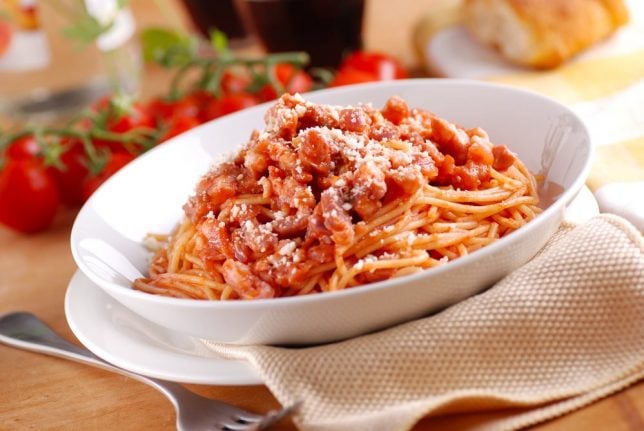The shepherds' town of Amatrice is famous for having birthed the most-loved pasta dish in the world: bucatini all’Amatriciana.
Over the years I’ve read many recipes, all of them making this very simple dish extremely complicated by adding useless ingredients.
However, Italian food is very simple as most of it comes from the peasant tradition. They had very few ingredients to use, but plenty of imagination.
READ ALSO: Why you won't find spaghetti bolognese in Italy
The Amatriciana sauce needs only three ingredients: tomato passata, guanciale (pig cheek fat) or pancetta, and pecorino cheese (never parmesan).
The quality of the meat and the cheese is obviously paramount, as they give all the flavour, but using the pancetta and the pecorino found at your local supermarket will also give amazing results.
Ingredients:
-
350 gr bucatini or spaghetti
-
130 gr guanciale or pancetta
-
400 gr tomato passata or canned chopped tomatoes
-
40 gr Pecorino Romano (grated)
-
Salt (to taste)
Instructions:
Step 1
Cut the guanciale into thin strips or small cubes. Heat a non-stick frying pan, then add the meat and cook until lightly golden. No need to add any oil, as the fat from the guanciale is enough.
Add the tomatoes and let simmer for 15 minutes. Season carefully, as the guanciale is already very salty.
Step 2
Meanwhile, bring a large pot of salted water to the boil. Add the bucatini and cook according to the instruction on the package. Once cooked, drain well and add to the Amatriciana sauce. Mix well.
Step 3
Sautee the pasta for a minute. Sprinkle with grated pecorino cheese and serve immediately.
Tip:
Enjoy your bucatini all’Amatriciana with a glass of Montepulciano d’Abruzzo.
More recipes for summer:
Italian bruschetta with tomatoes and basil
Pugliese green beans in tomato sauce
Strawberry and limoncello tiramisù

Silvana Lanzetta. Photo: Private
Silvana Lanzetta was born into a family of pasta makers from Naples and spent 17 years as a part-time apprentice in her grandmother’s pasta factory. She specializes in making pasta entirely by hand and runs regular classes and workshops in London.
Find out more at her website, Pastartist.com, including this recipe and others.




 Please whitelist us to continue reading.
Please whitelist us to continue reading.
Member comments